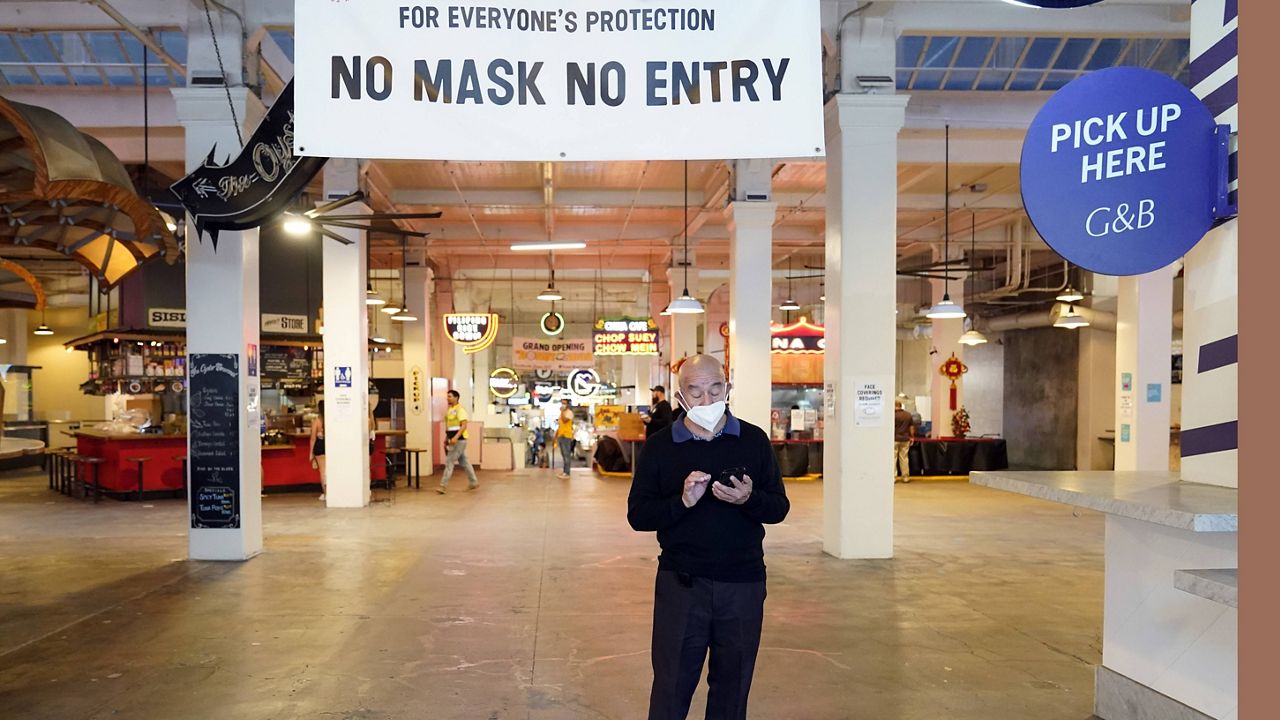LOS ANGELES (CNS) — Looking to combat a COVID-19 surge, Los Angeles County announced tightened restrictions Tuesday, requiring restaurants, wineries, breweries, and non-essential retail businesses to close at 10 p.m. starting on Friday, while also limiting their capacity and that of indoor retail shops.
What You Need To Know
- L.A. restaurants, wineries, breweries, and non-essential retail businesses to close at 10 p.m. beginning Friday
- Other measures included a 50% capacity limit for restaurants with outdoor service and a 25% capacity limit for indoor personal care businesses and offices
- Although the rate of deaths from the virus has not risen sharply, that number is considered a "lagging indicator"
- Officials have pointed to gatherings of residents — either in public or private settings — for driving the recent surge
While short of a full-on lockdown, county officials warned that if case numbers and hospitalizations continue increasing, sweeping "Safer At Home" restrictions will return and a countywide 10 p.m. to 6 a.m. curfew will be imposed.
For now, restrictions set to take effect Friday are:
- Indoor "non-essential" businesses such as retail stores, offices, and personal care services will be limited to 25% occupancy;
- Outdoor service at restaurants, wineries, and breweries will be limited to 50% of the maximum outdoor capacity;
- Outdoor cardrooms, miniature golf sites, go-kart tracks, and batting cages will be limited to 50% of maximum outdoor capacity;
- Customers at personal-care businesses must make advance appointments, and no services that require customers to remove their face masks can be offered;
- Restaurants, wineries, breweries, and non-essential retail businesses must be closed between the hours of 10 p.m. and 6 a.m; and
- Outdoor gatherings must be limited to no more than 15 people from a maximum of three households.
The county previously issued guidance limiting gatherings to three households, but there was no numerical limit on attendees.
The changes come amid a surge in COVID-19 that saw daily case numbers exceed 2,000 most of last week before topping 3,000 on Saturday and Sunday.
The county has also seen a steady increase in hospitalizations. The number of L.A. County residents hospitalized with the virus surpassed 1,000 on Sunday for the first time in months, jumping from 966 on Saturday to 1,014, then up to 1,049 on Monday.
All other key metrics in the county are on the rise. Public health director Barbara Ferrer said Monday the county's average daily rate of new cases per 100,000 residents was 13.7, nearly double the 7.6 rate from a week ago. The county's seven-day average daily rate of positive virus tests was 5.3% on Monday, up from 3.8% just a week ago.
As of Tuesday, the county's five-day average of daily new cases was 2,884, while there were 1,126 people hospitalized. According to the county, if the five-day average of new cases reaches 4,000, or if hospitalizations top 1,750, outdoor dining at restaurants, breweries, and wineries will end, with the businesses restricted to pick-up and delivery service only.
If the five-day case average reaches 4,500 or more, or if hospitalizations top 2,000 per day, the county will re-implement its original Safer At Home order for three weeks, allowing only essential workers to leave their homes, or residents seeking out essential services. The county at that point would also issue a 10 p.m. to 6 a.m. curfew, with only essential workers exempted.
"Los Angeles County is at a critical moment to save lives and curb the spread of COVID-19," county public health director Barbara Ferrer said in a statement. "I urge our residents, businesses and community leaders to heed this warning and follow these heightened safeguards so that additional restrictions do not need to be imposed.
"We are so grateful that many of our residents are wearing face coverings, keeping physically distanced and avoiding gathering with people they don't live with, but we need everyone to do their part and follow these measures," she said. "Lives and livelihoods are at stake and our entire community will be affected by our collective action if we do the right thing."
The county reported 2,301 new COVID-19 cases on Tuesday, while Long Beach health officials added 157 and Pasadena reported 61. The new cases lifted the cumulative county total to 344,741 since the start of the pandemic.
Another 25 coronavirus-related deaths were also reported by the county Tuesday, while Pasadena reported one fatality, raising the countywide death toll to 7,300.
Health officials have pointed squarely at gatherings of residents — either in public or private settings — for driving the recent surge, which has primarily involved younger residents under age 50.
Ferrer said Monday residents between 18-29 have consistently accounted for a larger proportion of new cases over the last two months, dramatically widening the gap over all other age groups. But while younger people are becoming infected more often, it is older residents suffering the consequences in terms of hospitalizations, she said, meaning young people are becoming infected and passing the virus to older residents who are at higher risk of severe illness.
"This is most unfortunate and it serves as a stark reminder that young people are spreading the virus with disastrous results for our elderly," Ferrer said.
Ferrer said she remains hopeful that if residents get back to strict adherence to protocols such as avoiding gatherings, wearing face coverings, and practicing social distancing, particularly over the Thanksgiving holiday, more drastic restrictions can be averted.
"If by us taking individual and collective actions as people and as organizations we don't get it back under control, then we have no choice but to take a hard look at what kinds of restrictions would again limit our ability to intermingle, particularly in those situations where there may be higher risk," Ferrer said.



